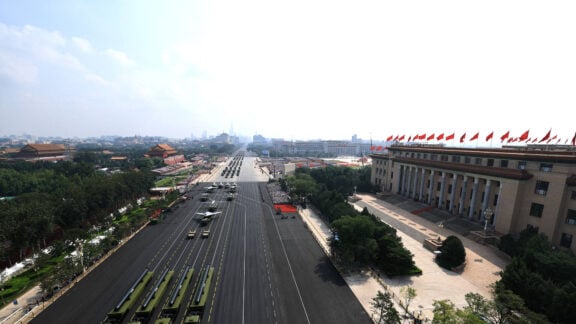The powers of Artificial Intelligence have come together to recreate the ancient Seven Wonders of the World, including the Colossus of Rhodes and the Statue of Zeus.
Using the imagine generator Midjounrey, AI has been able to reimagine these historic structures in modern society along with tourists.
With the exception of the Great Pyramid of Giza, all these structures have been lost over time due to numerous factors like war, crumbling civilisations and natural disasters, making this a unique way to revisit these ancient wonders built thousands of year ago.
Statue of Zeus at Olympia
The 40-foot-tall ivory statue of Zeus sat on a throne inside an airy temple and was built by Olympia to rival those built in Athens.
Records show the massive statue was destroyed in a fire at Constantinople in 426 CE.
The AI generator has created images of the wonder surrounded by tourists seated around it.
Great Pyramid of Giza
The final wonder depicted in the AI images is the one that still exists and is one of the most popular tourist attractions in the world today.
The structure was constructed in in the early 26th century BCE over the course of 27 years, with ancient Egyptians laying stones that weighed up to 2.5 tons each, which were dragged by enslaved people by order of pharaoh Khufu.
Over time, much of the smooth white limestone casing was removed, lowering the height of the pyramid from 146.6 metres to 138.5.
AI has been able to restore it to its original glory, including the white limestone casing at the top.

Colossus of Rhodes
The famed 100ft statue depicting the Greek god of the sun, Helios, was a remarkable feat of engineering and building that stood above the harbour in Rhodes.
It notably collapsed at the knees from an earthquake in 226 BCE, falling onto the mainland after standing for 54 years.
While ancient artwork of the structure shows the statue straddling the harbour entrance, researchers have determined this would have been impossible and say it instead stood on a pedestal near the harbour’s entrance, welcoming visiting ships.
The AI-generated image reflects this and also depicts tourists to give a taste of what it would look like in modern times.

Temple of Artemis at Ephesus
The building honouring Artemis, the Greek goddess of chastity, hunting, wild animals, forests, and fertility, was notably built and destroyed three times throughout history.
It was first demolished by Herostratus, just for fame, then by the Goths, who wrecked the city while passing through on the run from the Romans.
It was torn down a final time in 401 CE by a Christian mob, with only the foundations and a single column surviving – which can still be seen today. The Temple of Artemis. Photo: Midjounrey/Open Domain/Free Use
The Temple of Artemis. Photo: Midjounrey/Open Domain/Free Use
Lighthouse of Alexandria
The most famous lighthouse in antiquity once stood at an estimated 350 ft tall on Pharos island in the Alexandria harbor in ancient Egypt.
It was built during the reign of Ptolemy II Philadelphus (280-247 BCE) and was a complex structure designed to showcase the prowess of the world’s intellectual capital while revealing its mathematical and geometric foundations.
Sostratus of Cnidus designed the burning fire to sit atop a cylindrical tower, an octagonal middle, and a square base.
It fell into eventual disrepair after three earthquakes between 965 and 1323 CE.

Mausoleum at Halicarnassus
The building was a tomb constructed in 350 BCE for Mausolus, ruler of Caria (an ancient region of Asia Minor) and was so impressive that the late king’s name became the generic word for significant funeral monuments and is used to this day.
The structure was a mixture of Greek, Near Eastern, and Egyptian design principles set in Anatolian and Pentelic marble.
The structure was destroyed by a series of earthquakes between the 12th and 15th century and was the last surviving of the six destroyed ancient wonders.

Hanging Gardens of Babylon
The Hanging Gardens of Babylon were supposed to have boasted elaborate terraces, magnificent water features and floating plants.
They were believed to have existed in 600 BCE and, according to legend, would have sat approximately 50 miles south of Baghdad in Iraq.
Records of it exist only in stories from ancient texts, with one specifically claiming Babylonian Emperor Nebuchadnezzar built the gardens in the Babylon province of Iraq for his wife, Amyitis, but there was no mention of them in any text written by the Emperor or his wife.
If the gardens did exist, they would have been razed after it was conquered by the Achaemenid Empire in 539 BC.









